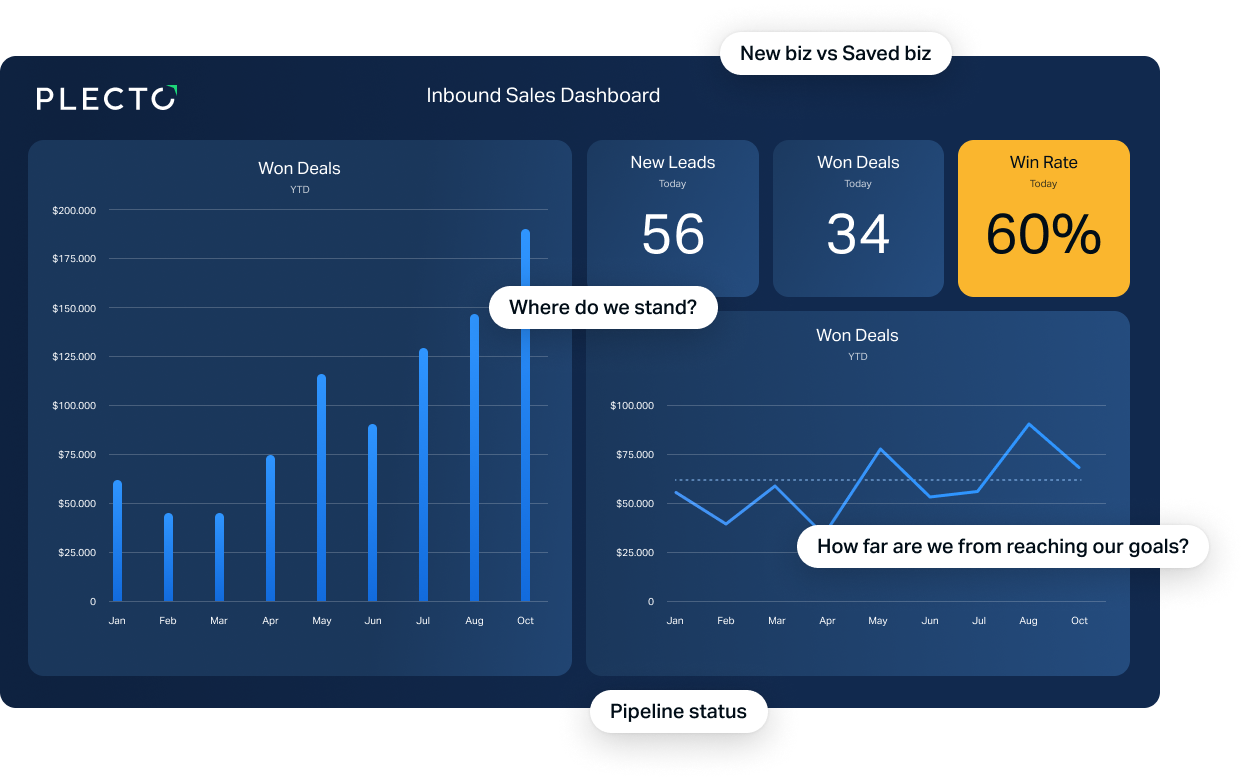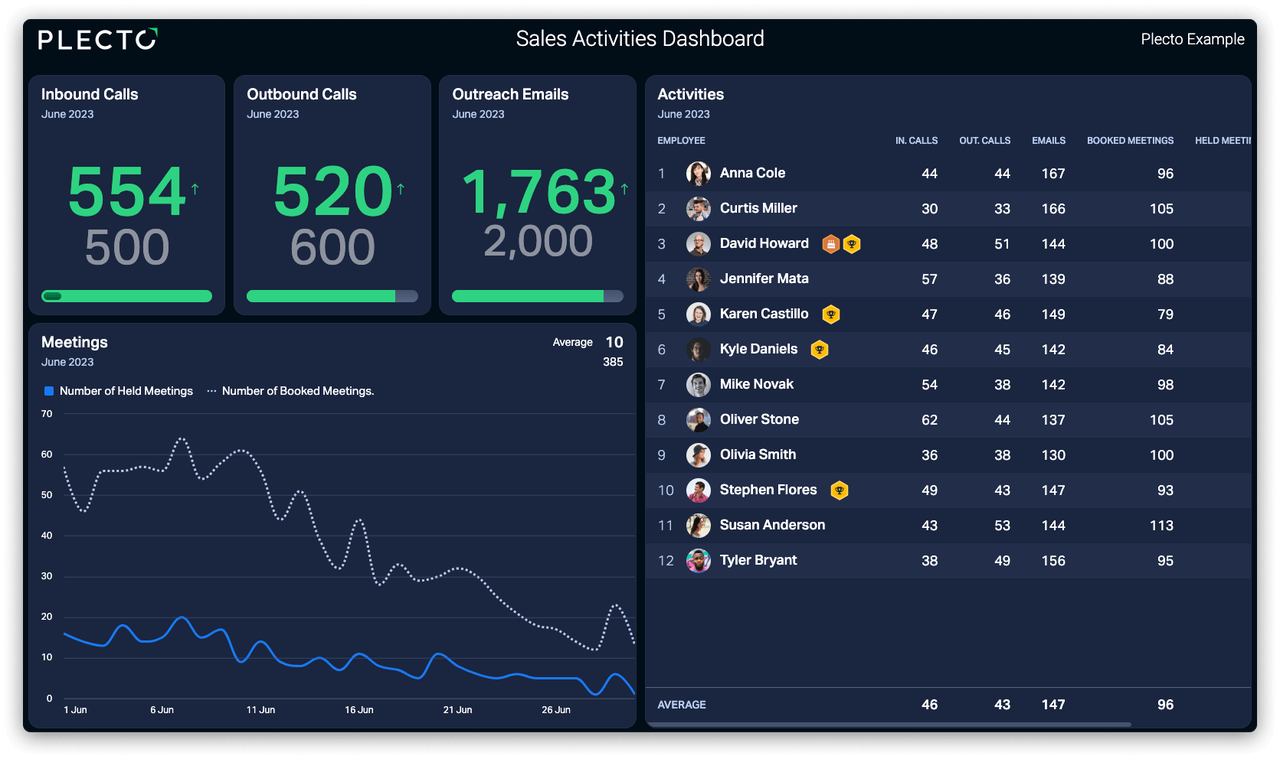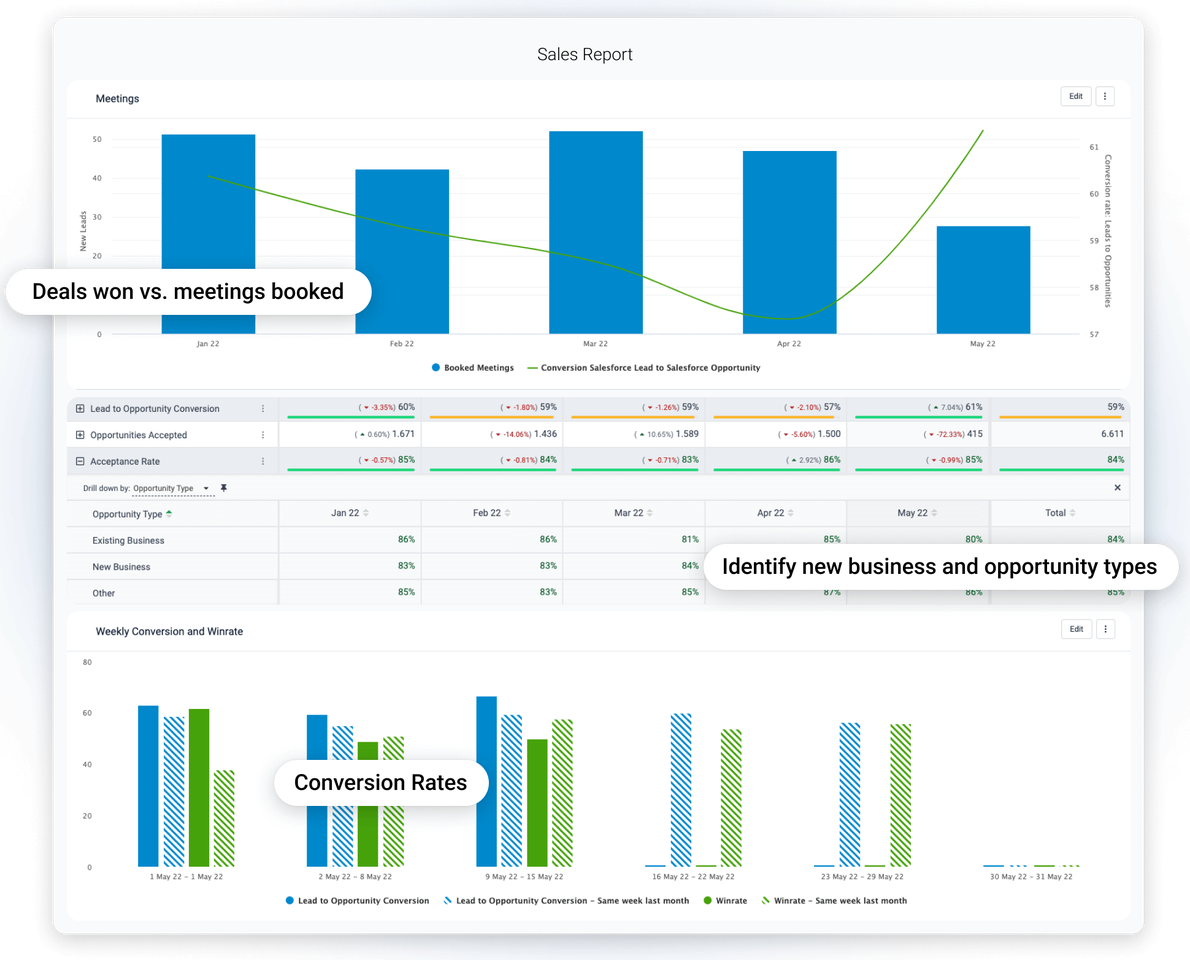Your employees are your company’s greatest asset. So, doing everything you can to help them succeed makes sense. Developing your employees is a powerful way of boosting their productivity. That means nurturing the right competencies and behaviors and harnessing them to help meet wider organizational goals.
Achieving this isn’t always easy. That said, there are many performance management strategies to help you, including implementing performance tracking. Read on and find out how to enhance employee productivity while creating a positive workplace culture.
Businesses measure various metrics to determine their health. Revenues, margins, and net promoter scores help monitor strategic performance.
Nevertheless, top-level statistics can obscure the human effort underpinning it all. Consider the work in clinching a deal or the rapid repair of a remote worker’s broken laptop. A business succeeds or fails on an accumulation of jobs well done.
The common denominator in this success? Your workforce. If you want your business to achieve its goals, you must also set your employees up for excellence.
Performance tracking plays a powerful role in supporting this. That’s because you must understand their performance to help employees develop in the future. If you can clearly visualize what each employee is achieving, you can celebrate and reward their successes.
You can also identify areas for employee performance improvement based on weaknesses or individual goals. This allows you to provide targeted support and coaching to help each team member improve personal productivity.
The result is that employees will feel recognized and rewarded—all within a framework of better professional development.
For a business, it’s a no-brainer. Helping employees to thrive makes them more productive and boosts your business as a whole.
4 benefits of performance tracking
Tracking employee performance makes very good business sense. Let’s see how.
1. Increase business productivity
Ongoing performance tracking enables managers and team leads to recognize and reward high performance. Doing so is great for morale and encourages others to improve their own performance standards.
You also need to work to identify development areas. Tracking can help identify where an employee is falling short and indicate barriers limiting a person's or team's productivity levels. From there, you can implement solutions and targets to help them improve.
Recognizing achievements and identifying obstacles allows you to maximize the former and fix the latter, ultimately boosting productivity. But, if employees think you are simply monitoring their output but not putting any actionable goals in place, they're likely to become less productive.
2. Promote data-driven decision-making
Data gathered during performance tracking will lead to more evidence-based decision-making. This data can:
- Inform employee reviews and Performance Agreements, providing quantitative evidence of achievements and areas for development.
- Help teams understand what success looks like and lead to insights about what skills or behaviors drive (or prevent) high performance.
- Provide concrete and fair evidence to inform numerous HR-related issues, such as promotions and incentives.
With the above in mind, performance-tracking data needs to be mediated by knowledgeable team leaders. For example, there may be good reasons for an employee’s performance dipping temporarily—perhaps personal circumstances have changed. Context is everything!
However, a data-rich perspective also offers protection against complacency. It can reveal issues that may otherwise have been missed, even challenging your team’s assumptions about what works.

3. Improve employee engagement
The importance of employee engagement as a driver of organizational success is well known. And performance management can support this.
For example, employees need to feel empowered to succeed in their roles. That requires identifying what they do well and where additional input may help. Tracking employees helps managers balance training, coaching, direction, and autonomy.
Done well, this can lead to more authentic, positive, and evidence-based employee-manager relationships. Of course, all of this has a positive knock-on effect on engagement.
4. Align on Goals and KPIs
Coherent and joined-up performance tracking can pull your team together, aligning everyone with your overall strategic goals.
Well-chosen goals help embed overall strategy in tangible and impactful ways across a business—ways that every individual can directly relate to.
Of course, you must explain to employees how you are tracking their performance and what you are tracking. How does individual performance relate to the overall strategy? Aim for consistency across the whole business. For instance, everyone may have a goal linked to a particular strategic aspect, and you may adopt consistent tracking methods.
Let’s look at an example. Perhaps there is a cross-business drive related to a particular element of cost control. As a result, you might roll out individual objectives, addressing this at ground level. This might include requiring individuals to create weekly budgets or for you to assign spending limits using software for spend management.
Getting everyone to focus on a particular issue consistently drives your strategy. Plus, with the right tools, those goals can be made visible and given daily, real-time prominence.

How to implement effective performance tracking
Tracking key performance indicators (KPIs) can be a smart move. But much depends on how it’s done.
1. Define and develop clear metrics and objectives
First, performance metrics and objectives must be defined for each team and individual and aligned with the broader organizational mission. These should be tailored to the individual and provide a challenge (based on current performance).
Various frameworks can support goal-setting. For example, the SMART goal approach builds specific (S), measurable (M), achievable (A), realistic (R), and time-related (T) goals. Whichever you choose, adopt one approach and implement it consistently.
2. Choose the right performance-tracking tools
Next, you need the capability to monitor metrics quickly. For example, the ability to easily visualize up-to-date employee performance, fast, is very powerful.
Done manually, the collation this involves is a huge job. Fortunately, various tools can automate this. For example, Plecto seamlessly integrates with your favorite CRM, sales, and customer service platforms (such as HubSpot, Salesforce, Pipedrive, and Zendesk). Here, you can build real-time dashboards and reports, that centralize the key KPIs from your different systems to build one single source of truth. Performance-tracking tools make your data usable, transparent, and instantly understandable.
3. Involve employees in the tracking process
It’s important to adopt a transparent and holistic approach to employee performance tracking. When managed well, it can become a positive part of your overall ethos, creating a data-driven culture that shares goals and celebrates success. Most employees want to understand how their work contributes to the bigger picture. To foster this, provide access to the dashboards, ideally displayed on TVs around the office. Be sure to also provide ample opportunities for employees to discuss their performance. They should understand the goals displayed and, on top of this, ensure they are involved in setting those goals.
4. Provide feedback and recognition
Once your performance-tracking dashboards are available and visible, put them to work.
Promote a climate where successes are celebrated every day. Once again, tracking tools such as Plecto can help make successes visible to everyone. Many businesses follow this up with incentives and rewards to increase a team’s hunger to achieve.
By drawing attention to high performers, you nurture a spirit of improvement. What are they doing that others can learn from? What’s working for them?
Positivity is usually best. Foster a sense of curiosity and optimism to improve. A degree of constructive competition is healthy. But ensure this develops within a culture that values cooperation and collaboration above all else. That way, success can become infectious.
5. Identify and address performance issues promptly
Performance tracking will sometimes reveal issues. But that’s part of its purpose.
Ongoing tracking allows problems to become apparent almost immediately. And that should be a positive thing. After all, if left unaddressed, they can become more entrenched.
Tracking tools can also be particularly useful, in highlighting issues that could otherwise go unnoticed. For example, with an increase in remote work, it’s harder to spot signs of overworking and burnout. But, by using expense and time management software you’ll be able to identify struggling employees and work towards a solution.
These tools can be combined with continuous communication and feedback, so whatever the case, you’ll be able to create timely and constructive positive improvements.
6. Promote continuous learning and development
Performance-tracking data helps uncover rich insights about what’s working (and what isn’t). You can even try different approaches and monitor those results. With a performance-tracking culture, you can focus on doing more of the effective analysis.

Involve employees in active conversations about the data. What does it show? What can be learned? The next steps will seem more natural and understandable when preceded by discussion.
And, of course, if issues crop up, the business must be seen to address them. For example, if one employee constantly misses deadlines, you might provide them with time-management training or assess their workload. If a team leader needs support in managing remote team communications, consider implementing a collaboration tool or platform.
7. Ensure legal and ethical compliance
Finally, organizations must make sure their approach to tracking is legal and ethical, complying with regulations and protecting the confidentiality of employee data.
Boost your productivity with Plecto
Performance tracking can help you to nurture a culture focused on success and improvement. Such an ethos helps to drive up the productivity of employees.
But, to enjoy the benefits, it must be done well.
Part of that is having the right tools to support performance management. For example, take a look at the benefits of using a system such as Plecto. It offers features such as Dynamic Dashboards, giving employees a personalized view of their KPIs.
Lindsay has nearly 10 years of digital marketing and demand generation experience. She has a passion for customer experience and is committed to educating audiences with relevant insights that solve their toughest business challenges.





